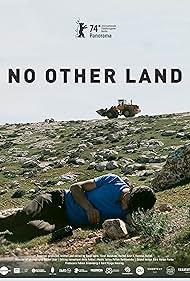This film, made by a Palestinian-Israeli collective, shows the destruction of the Masafer Yatta concentration camp in the West Bank by Israeli soldiers and the alliance that forms between Palestinian activist Basil and Israeli journalist Yuval. Focusing on the relationship at the heart of the film is the wisest choice, as it depicts an awkward but relatable friendship. Their attempts to stop the Israeli army from destroying a local school, despite the soldiers’ attacks, underscore the importance of solidarity. The film combines dangerous phone footage, beautifully framed village scenes and historical accounts, creating a powerful mix. Although some of the discussions seem staged, the emotions expressed are real. This mix provides ample time to reflect on the horror depicted, which only worsened after filming. No Other Country is a seminal documentary that cannot be watched without engaging with the suffering it depicts – a devastating success. The filmmakers skillfully handle the complexities of their subject matter, ensuring that the voices of the community involved resonate throughout the story. By focusing on individual stories within the larger context of the conflict, they humanize a situation often reduced to statistics and headlines. Each character offers a unique perspective that allows viewers to more deeply understand the personal toll that geopolitical tensions have on daily life. In moments of levity amidst despair, the film captures the humanity that persists even in desperate conditions. This balance is an important reminder of the resilience of the human spirit, and shows how laughter, camaraderie and hope can thrive despite adversity. The authenticity of these relationships is particularly highlighted in moments of vulnerability, where characters openly share their fears, dreams and desires, which contrast starkly with the chaos around them. Cinematography also plays a key role in immersing viewers in reality. life in the village is in danger. The camera lingers frequently on the landscape—sun-kissed fields, crowded markets, and the eerie silhouettes of ruined buildings—evoking a sense of place that is both beautiful and tragic. These visuals document the foundations and provide context for the voices and stories that inform them. Meanwhile, the chilling score heightens the emotional impact, intertwining scenes with a haunting melody that lingers long after the credits roll. It highlights moments of tension and relief, encouraging viewers to feel the objects with them, rather than simply observe them. This multifaceted approach ensures that “No Other Country” does more than inform; it turns viewers into witnesses and forces them to confront the harsh realities faced by the people portrayed. presents a poignant call to action and challenges viewers to recognize the ongoing struggles of those caught in the crossfire of conflict. It inspires audiences to not only empathize, but also to advocate for change, reminding them that awareness is the first step toward solidarity and advocacy. This film is not just a documentary; it is an important part of the conversation about human rights and social justice, engaging audiences in a way that stays with them long after they have watched it. As the subtitles fade to black, one cannot help but feel a deep responsibility to share the stories that have been bravely revealed and to ensure that the suffering depicted is not forgotten or ignored.
 Cart is empty
Cart is empty 


 36/23
36/23



Leave A Comment